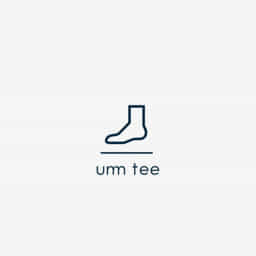The English language is full of curious and sometimes unusual words that may sound unfamiliar or old-fashioned. One such word that sparks questions among learners and native speakers alike is underfoot. Some people wonder whether underfoot is a real word, how it is used, and whether it still fits into modern vocabulary. Although it might seem a bit archaic at first glance, underfoot is very much a legitimate word with a specific meaning and practical usage in everyday English. Exploring its definition, usage, and grammatical context helps clarify why this word holds a secure place in the language.
Definition and Meaning of ‘Underfoot’
The word underfoot is an adverb that describes something located beneath or under one’s feet. It typically conveys the sense that something is physically in the path where someone is walking or standing. According to standard dictionaries and grammar guides, underfoot means under the feet, especially while walking or standing. It often implies an element of obstruction, inconvenience, or presence in an immediate area.
Examples in Context
To understand the meaning of underfoot, it is helpful to see it used in sentences:
- The toys were scattered underfoot, making it hard to walk through the room.
- The snow was soft and deep underfoot.
- She felt gravel crunching underfoot as she walked along the path.
In each of these examples, the term describes something literally beneath a person’s feet, influencing their ability to walk or move.
Is ‘Underfoot’ Recognized as a Word?
Yes, underfoot is recognized as a valid word in the English language. It is listed in reputable dictionaries such as the Oxford English Dictionary, Merriam-Webster, and Collins. It is not slang, nor is it a nonstandard expression. Its usage is grammatically correct, and it can be found in both formal and informal writing. Although more commonly seen in descriptive writing, especially literature or journalism, it remains a useful and meaningful term.
Parts of Speech
Underfoot functions primarily as an adverb. This means it modifies verbs, particularly actions involving movement, walking, or placement. It does not typically serve as a noun or adjective. Its grammatical placement tends to be at the end of a clause or sentence for clarity.
Here is a breakdown:
- Verb it modifies: walk, run, stand, tread, stumble
- Type: Adverb of place
Etymology and Historical Use
The origin of underfoot traces back to Middle English, combining the words under and foot. The compound structure clearly indicates its literal meaning. It has been used in English literature and speech for centuries and continues to be understood across English-speaking regions. Older texts often used the word for poetic or dramatic effect, especially in scenes involving travel, danger, or discomfort.
For example, writers might describe treacherous terrain as wet and slippery underfoot or show danger lurking underfoot in battlefields. This sense of vivid description gives underfoot a strong presence in narrative prose.
Modern Usage and Relevance
While underfoot may not be the most frequently used word in everyday speech, it is far from obsolete. It appears in weather reports, travel narratives, product descriptions (especially related to flooring), and even in parenting blogs where children’s toys or pets are discussed.
In certain industries, like construction, design, and safety regulations, underfoot can refer to surface materials or hazards. For example:
- Watch out for slippery conditions underfoot.
- The underfoot surface was tested for stability and durability.
Thus, the word continues to serve a functional purpose, especially when describing conditions that impact movement or safety.
Synonyms and Related Expressions
Although underfoot is specific in its usage, some synonyms or alternative expressions carry similar meanings, depending on context. However, few words replace it exactly. Related expressions include:
- beneath one’s feet
- on the ground
- below (in certain phrases)
- on the floor
Still, underfoot remains more concise and evocative in many situations. It is especially effective when used to describe hidden or unexpected elements that affect walking or movement.
Common Collocations with ‘Underfoot’
Writers and speakers often pair underfoot with certain nouns or adjectives to enhance imagery or clarity. Common collocations include:
- muddy underfoot
- icy underfoot
- dangerous underfoot
- pets underfoot
- children underfoot
These pairings help readers or listeners quickly visualize or feel the described environment. The word contributes not just to physical description but sometimes to emotional tone, such as frustration or discomfort.
Usage in Figurative Language
Besides literal usage, underfoot can sometimes take on a figurative or metaphorical meaning. For instance, saying I have too many responsibilities underfoot uses the term symbolically, implying burdens that interfere with forward movement. This kind of expression is less common but still found in creative writing and speech.
Is ‘Underfoot’ Suitable for Academic or Professional Writing?
Yes, underfoot can be used in academic or professional contexts, especially in fields involving environmental science, architecture, engineering, or literature. However, it should be used appropriately and not substituted for more precise technical terms when necessary.
For example, in a scientific report, one might say:
- The terrain was uneven underfoot, posing a challenge for surveyors.
In contrast, a formal technical document might prefer more direct terminology, such as the ground surface was uneven. Still, underfoot is not incorrect; it simply suits narrative or descriptive purposes better.
To sum up, underfoot is indeed a word an established, recognized, and meaningful part of the English language. It serves as an adverb that describes something situated beneath one’s feet, often while moving or standing. Its origins are rooted in Middle English, and it has retained its clarity and usefulness over centuries. While it may not be a word you hear every day, it remains especially valuable in descriptive writing, safety warnings, and environmental observations. Whether used literally or figuratively, underfoot contributes precision and vividness to English communication.
